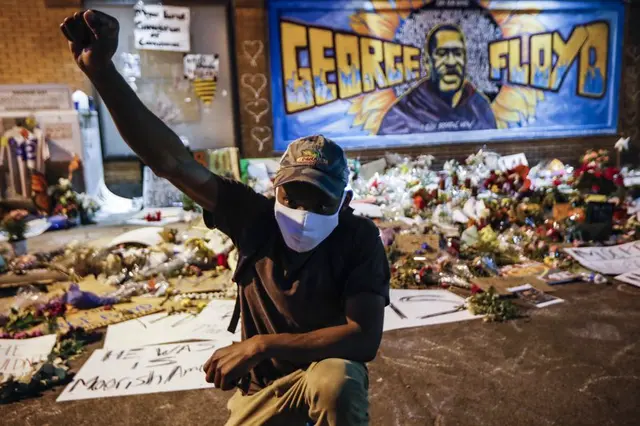To truly understand the rage people in this city felt as they watched a video of George Floyd begging, gasping and slowly succumbing beneath the weight of a police officer’s knee, it’s necessary to step back in time.
Seven years before Floyd’s cheek was smashed against the pavement, Terrance “Mookie” Franklin cowered behind a water heater in a dark basement after fleeing police who were trying to confront him about a burglary. With flashlights mounted on their guns and a police dog leading the way, they thumped down the stairs and soon found him hiding.
Fourteen minutes later, the 22-year-old African American was lying in a puddle of his own blood. Seven bullet holes pockmarked his head and neck, and three more pierced his upper torso.
As with so many allegations of police brutality in Minnesota, exactly what happened in that basement on May 10, 2013, may never be known.
The official account said two officers were shot and wounded after Franklin grabbed a police gun. But no gunshot residue testing was conducted and an examination of defense evidence suggests friendly fire may have been to blame. A $795,000 settlement reached with Franklin’s family last year kept those details out of court.
What’s clear is this: The deaths of Floyd, Franklin and other black men at the hands of Minneapolis police have exacerbated the corrosive relationship between people of color and a criminal justice system they feel is stacked against them. At every step along the way, they feel choked.
It’s a story that dates back more than four decades, to when Minnesota’s small, flourishing black community fell victim to redlining and discriminatory denial of services, including bank loans. Soon after, drugs and guns started flooding the area and crime rates soared.
When a fragile truce between gangs and police was shattered in 1992 by the execution-style hit on officer Jerry Haaf, a crackdown followed. It has perpetuated a culture of brutality and impunity that continues to this day, partly because the department has avoided reform, said Michelle Gross of the city’s non-profit Communities United Against Police Brutality.
The force did not respond to questions for this story. But police union president Lt. Bob Kroll has steadfastly defended officers’ conduct over the years. In 2019, when the city’s mayor banned “warrior-style” training for police, Kroll said the union itself would pay for the instruction.
An AP review of Minneapolis Police Department data found force has been used 11,000 times in the past five years. Black people accounted for 60% of those cases, even though they represent only 19% of the city’s population. Body pins were most commonly used, followed by punching, kicking and shoving.
In 2015, the U.S. Justice Department released a report addressing ways to prevent police misconduct, provide more transparency and improve community relations following a request from Minneapolis’ then-police chief. It found there were no clear criteria on the use of force and de-escalation tactics, and that law enforcement agency either lacked the will or the authority to remove bad officers.
SWAT team member Lucas Peterson, who fired five shots into Franklin’s skull, had already been involved in 12 other excessive force cases — including the death of another black man.
In 2002, not long after joining the force, Peterson, who is white, used a choke hold on Christopher Burns after responding to a domestic dispute. The medical examiner’s office ruled the death a homicide, and a $300,000 settlement was paid, though a grand jury chose not to indict.
Four years later, Peterson lied in a police report, saying a woman had jumped on his partner’s back during a traffic stop. The charges were dropped after surveillance video proved she didn’t. That cost the city $100,000.
Peterson remains on the job.
Incidents that have drawn national attention since then include the shooting of Philando Castile, 32, during a 2016 traffic stop in nearby Falcon Heights as his girlfriend live-streamed the aftermath on Facebook. The Latino officer was acquitted..
And the death of Jamar Clark, 25, shot in 2015, when police responded to a report of an assault on a woman at a birthday party. Police said Clark struggled with two police, and that his DNA was found on an officer’s gun. But witnesses gave accounts that conflicted with that narrative. No charges were brought against the white officers involved.
Mohamed Noor, a black Somali-American, is the only officer known to face murder charges in an on-duty killing, and his victim was white. Justine Ruszczyk Damond was shot in 2017 as she approached his car to report a possible rape behind her home. Noor was sentenced to 12½ years in prison, and the woman’s family received a record $20 million settlement.
Castile’s family settled for $3 million. Clark’s family accepted $200,000.
“There it is, right there, in those numbers,” said Kevin Reese, founder of the Minneapolis activist group Until We Are All Free. “It is a prime example of how, here, white life is valued more than black lives.”
(AP)
 简体中文
简体中文

